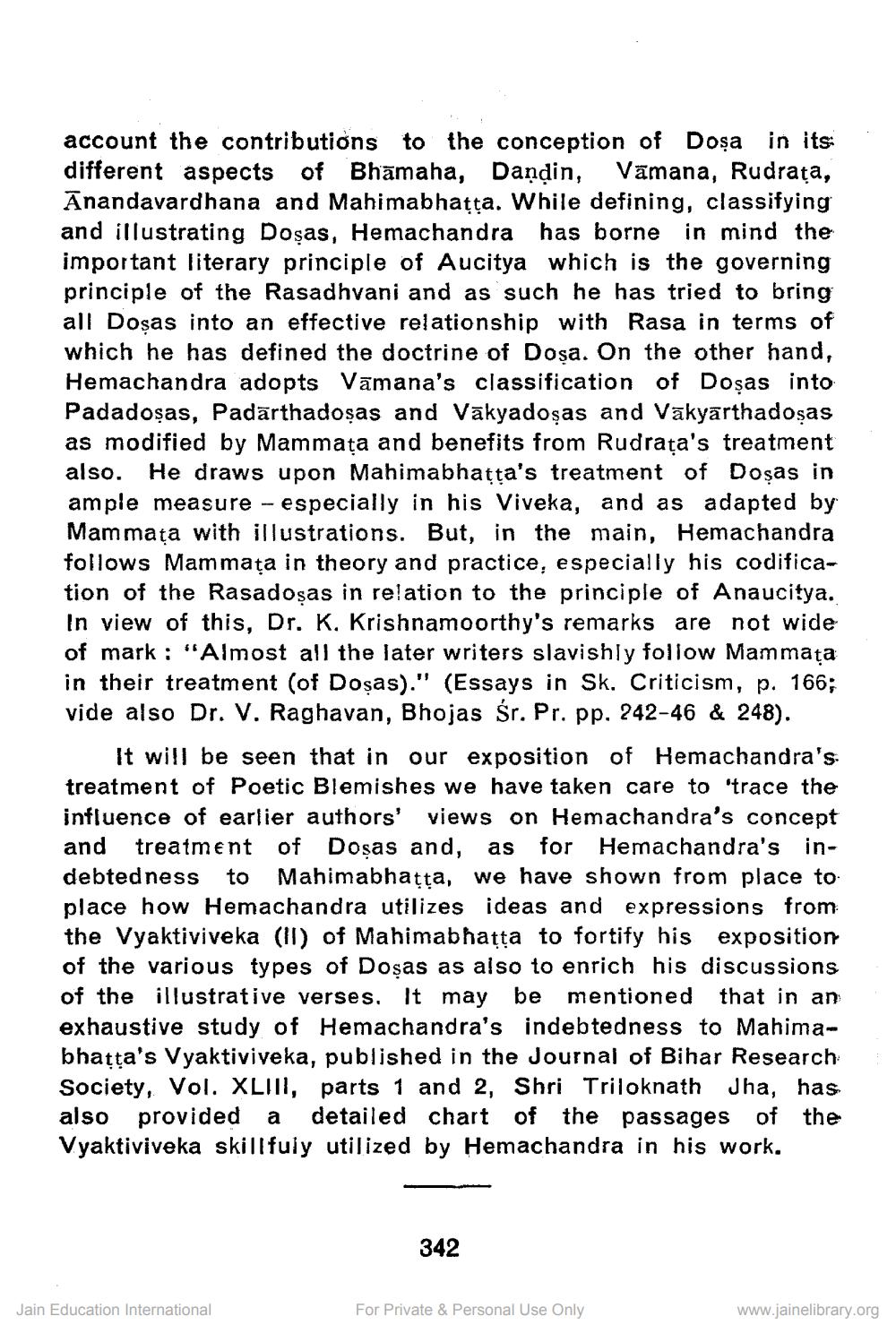________________
account the contributions to the conception of Doșa in its different aspects of Bhamaha, Daṇḍin, Vamana, Rudrața, Anandavardhana and Mahimabhaṭṭa. While defining, classifying and illustrating Dosas, Hemachandra has borne in mind the important literary principle of Aucitya which is the governing principle of the Rasadhvani and as such he has tried to bring all Dosas into an effective relationship with Rasa in terms of which he has defined the doctrine of Dosa. On the other hand, Hemachandra adopts Vamana's classification of Doṣas into Padadosas, Padarthadoṣas and Vakyadoṣas and Vākyarthadoṣas as modified by Mammața and benefits from Rudrata's treatment also. He draws upon Mahimabhaṭṭa's treatment of Dosas in ample measure - especially in his Viveka, and as adapted by Mammata with illustrations. But, in the main, Hemachandra follows Mammata in theory and practice, especially his codification of the Rasadoṣas in relation to the principle of Anaucitya. In view of this, Dr. K. Krishnamoorthy's remarks are not wide of mark: "Almost all the later writers slavishly follow Mammața in their treatment (of Dosas)." (Essays in Sk. Criticism, p. 166; vide also Dr. V. Raghavan, Bhojas Śr. Pr. pp. 242-46 & 248).
It will be seen that in our exposition of Hemachandra's treatment of Poetic Blemishes we have taken care to 'trace the influence of earlier authors' views on Hemachandra's concept and treatment of Dosas and, as for Hemachandra's indebtedness to Mahimabhatta, we have shown from place to place how Hemachandra utilizes ideas and expressions from the Vyaktiviveka (II) of Mahimabhaṭṭa to fortify his exposition of the various types of Doṣas as also to enrich his discussions of the illustrative verses. It may be mentioned that in an exhaustive study of Hemachandra's indebtedness to Mahimabhatta's Vyaktiviveka, published in the Journal of Bihar Research Society, Vol. XLIII, parts 1 and 2, Shri Triloknath Jha, has also provided a detailed chart of the passages of the Vyaktiviveka skillfuly utilized by Hemachandra in his work.
Jain Education International
342
For Private & Personal Use Only
www.jainelibrary.org




